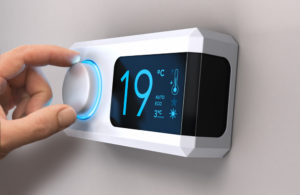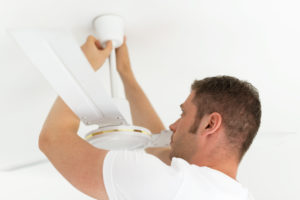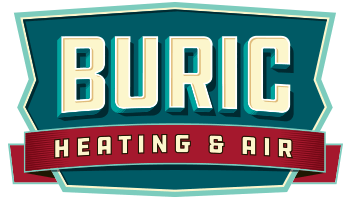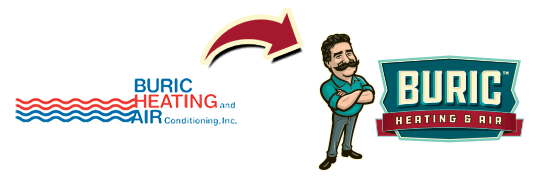
Keeping your home warm and comfortable is non-negotiable during the winter months. However, if you are living in an older home and you have an aging furnace, it can get expensive to heat the whole home. Thankfully, there are many different things you can do this winter to lower your utility bills and improve the efficiency of your heating system. Here are a few of our best tips for saving money on furnace operation this year.
Invest in Professional Furnace Maintenance
One of the first things we recommend to families who are looking to lower furnace costs both in the short and long-term is furnace maintenance. You should never wait until your furnace breaks down to call a service company. Repair costs are usually far more expensive than annual maintenance.
The first benefit of a furnace tune-up is that it can make your system more energy-efficient. Regular maintenance will include lubrication to make moving parts work more efficiently, cleaning to remove dirt and debris from the furnace, and an inspection to make sure any minor repairs are taken care of.
Without regular cleaning and lubrication, the components inside your furnace will wear down faster, and small problems will go unnoticed. These small problems tend to lead to bigger problems which will eventually result in a breakdown. Not only can maintenance protect against breakdowns, but it will also extend the lifespan of your unit saving you the money that you would have spent on a replacement.
One aspect that many homeowners forget to think about when it comes to furnace maintenance is that investing in this regular care can help to protect your warranty. Often the warranty is contingent upon the homeowner caring properly for the furnace. Failure to do so may cause your warranty to be voided.
Change the Filter Frequently
Manufacturers recommend changing your filter anywhere from 2-6 times per year. However, it may benefit you to change it more often than you have been to help your system run more efficiently and keep the cost of running it lower. Certain factors may necessitate changing it more often such as having animals. Dog and cat hair can cause furnace filters to become clogged much faster. A good test is to replace your filter and check it after one month to see how dirty it has become. Filters are generally affordable, so changing them more often can be worth the money.
Maintain the Vents
Over time, your vents can become blocked by dust, pet hair, and other debris. When your vents are obstructed, your furnace uses more energy to blow the same amount of heat into your home. By using a shop vac or a vacuum with a hose, you can keep vents clear by removing the cover, cleaning it, and vacuuming the space behind it every couple of months. This comes with the added benefit of keeping the air in your home cleaner and free from dust, pet hair, and dander.
Clean Your Furnace
While you are cleaning your vents, you can also consider cleaning in and around your furnace. This can also be done while changing your filter or during a furnace repair. You should always turn off the power to your furnace before working in or around it. To do basic cleaning, remove the access panels and clean any accessible areas with your hose vacuum. At this time, you can also look to make sure the area around your furnace is completely clear.
Change the Settings on Your Thermostat
Many homes have thermostats that can be programmed so that they keep the temperature of your home exactly where you want them. For people with regular work schedules or families who prefer a cooler temperature at night, your thermostat can be set to lower the temperature during these times. If you do not have a programmable thermostat, you will have to be more committed to lowering the temperature before leaving the house or going to bed.
homes have thermostats that can be programmed so that they keep the temperature of your home exactly where you want them. For people with regular work schedules or families who prefer a cooler temperature at night, your thermostat can be set to lower the temperature during these times. If you do not have a programmable thermostat, you will have to be more committed to lowering the temperature before leaving the house or going to bed.
Find Ways to Keep it Colder in the House
Lowering the temperature on your thermostat by just one degree can save a surprising amount of money. Some studies have shown that a difference of one degree on your thermostat can result in a 3% change in your energy bills. Of course, doing this may require some modifications to your lifestyle. You may want to dress warmer inside the house and keep a warm blanket handy for when you are sitting on the couch or at your desk.
You can also consider keeping a space heater handy for certain specific situations. This tip comes with a few caveats, however. Using a space heater to heat an entire area of your home is not more efficient than simply using your furnace to heat the space. They can also be a fire hazard if they are left unsupervised. However, if you find that you are turning up the heat in the whole house just to keep you warm while you spend a couple of hours working at your desk, it may be more budget-friendly to turn down the thermostat and keep yourself warm with a small space heater until you are done with your task.
Replace Your Furnace
The efficiency of all furnace systems is judged using something called the AFUE, or annual fuel utilization efficiency. It is well known that furnaces that have been around for a while have a much lower AFUE. Technological advances have allowed for the creation of systems that have a higher efficiency rating than ever.
Older systems, typically those which are from the 1990s or before, have a much lower efficiency rating. An average AFUE range for these furnaces is somewhere between 56% and 70%. While this may not seem too bad, this means that up to 44% of your heat and natural gas is being wasted simply because of an inefficient system.
Today, you can find systems that have an AFUE rating of up to 98%. A typical energy-efficient model will have a rating of at least 90%. This efficiency is achieved through several different improvements. Modern furnaces have dispensed with the pilot light ignition which can use more energy to operate. Manufacturers have also made other changes in the construction of their products such as combustion chambers that are sealed, preventing heat from escaping, burners and fans that work at variable speeds and capacities depending on the need, and heat exchangers that aren’t as heavy.
When choosing a new furnace for your furnace installation, make sure you purchase a model that has an ENERGY STAR certification as well as an AFUE of 95% or more. You can find this information in the user manuals of the systems as well as online. Additionally, you will want to talk to your HVAC technician to find the right size furnace for your home. A furnace that is too big or too small can both waste energy and cost you more money.
Invest in a Ceiling Fan
A ceiling fan is something that we often associate with hot weather. However, the way a ceiling fan works make them perfectly suited to both hot and cold weather. Contrary to popular belief, a ceiling fan does not cool you off by reducing the temperature inside the home. Instead, it works by distributing the air inside the home. The blades force hot air down each time it tries to rise, and the hot air is replaced by cooler air.
During the summer, occupants inside a room feel cooler when a fan is running because of the air displacement and wind chill in the room. The breeze wicks the moisture from your skin more quickly which lowers your body temperature and makes you feel cooler. This can make it feel up to 4 degrees cooler in the room, allowing you to raise the temperature on your thermostat a few degrees.
the summer, occupants inside a room feel cooler when a fan is running because of the air displacement and wind chill in the room. The breeze wicks the moisture from your skin more quickly which lowers your body temperature and makes you feel cooler. This can make it feel up to 4 degrees cooler in the room, allowing you to raise the temperature on your thermostat a few degrees.
Most fans today can reverse the direction that they spin, making them useful in the winter, too. The process is reversed, allowing you to feel the warm air more and enabling you to set your thermostat to a lower temperature. It is important to remember, however, that you should never run a ceiling fan when you are not in the room. The effects are only experienced when you are present so keeping them on can be a waste of energy.
Seal Your Home
Heat can be lost in the winter through the tiniest cracks and holes in your home. Higher utility costs can be an indication that the hot air that is blowing out of your vents is escaping outdoors, causing you to have to run your furnace much more. One solution is to spend some time and effort sealing up problem areas in your home.
One of the first major areas of heat loss is the windows in your home. If they are old or not properly sealed, heat can escape quickly and cold air from outside can leak indoors. You can solve this problem by having new energy-efficient windows installed. However, if this is not in the budget, you can quickly seal your windows by purchasing shrink-wrap window kits that can be put on your windows to seal them during the winter. This shrink-wrap can easily be removed during the summer.
Doors can also be an area of heat loss. Make your doors more energy-efficient by installing or replacing the weather stripping on your doors. It may seem like a small effort, but quality weather stripping can make a big difference.
Finally, you can have your ductwork professionally sealed to prevent heat from escaping before it even enters your living space. Hot air can escape from the smallest holes in the ductwork. Sealing your ductwork can improve the efficiency of your system by up to 20%.
Insulate Your Attic
Attics can be problem areas in the home and can be responsible for trapped moisture and heat loss. To improve the efficiency of your home, have your attic properly insulated, and then install an attic fan to keep the temperature and humidity levels stable. If your home was built before 1980 and the attic has never been improved, there is probably a need for improving the insulation in this space. Other areas of your home can be insulated to protect against heat loss as well, so it can be helpful to talk to an expert in this area and find out what you can do to help your home retain heat.
Use Natural Heat From Sunshine
All of the windows in your home can be potential heat generators during the daytime hours. When the sun is shining, it is important to open your curtains and let the natural light come in and warm your home. Sitting in the sun can also make you feel warmer and allow you to turn down your thermostat.
in your home can be potential heat generators during the daytime hours. When the sun is shining, it is important to open your curtains and let the natural light come in and warm your home. Sitting in the sun can also make you feel warmer and allow you to turn down your thermostat.
There are additional benefits of letting in the natural sunlight. It can help you save money on your electricity by allowing you to keep your lights off for more hours during the day. The natural light can also help you to regulate and stabilize your mood and to help ward off the winter blues. It is always important to close your curtains when the sun goes down to help your home maintain its heat throughout the night.
Use Exhaust Fans Only When Needed
Exhaust fans can be extremely useful inside your home. They can help to keep the air in your home cleaner by ridding it of smoke, pollutants, odors, and dust. They can also prevent the growth of mold by pulling moisture out of your bathroom or attic.
However, they can also create unwanted air movement inside the home by sucking in warmth and causing cold air to be pulled from your fireplace, outlets, windows, and other areas in your home that are not well-insulated. During the winter, you should balance the benefits with the disadvantages of exhaust fan use by using them sparingly such as after a shower or while cooking.
Properly Use Your Fireplace
Having a fire in your fireplace can be a wonderful way to add coziness to your room while also providing an alternate heat source that can save energy and give your furnace a break. However, improperly caring for your furnace can lead to heat loss that will counteract any benefits that you gain by lighting a fire. There are many things you can do to make your fireplace a help rather than a hindrance to furnace efficiency.
The most important thing to remember when it comes to heat loss is that fireplaces pull air up and out of your home. When there is no fire in your fireplace, warm air can escape up your chimney. To prevent this, you should have a damper installed and always close it in between fires. Your damper should fit perfectly inside the chimney, and you should have it inspected periodically to make sure this is still the case. The second thing you can do is have glass doors installed on the front of your fireplace. You should choose doors that are able to completely close and block any air from escaping.
While your fire is lit, it is important to turn your furnace off. Running your furnace at the same time as having a fire is essentially the same thing as keeping your door open while you heat your home. Excess heat is sucked from the room and into the chimney when there is a fire in the grate, making you lose all of the heat that your furnace just generated. You can also increase the heat that is produced by your fireplace by installing an insert. Finally, always remember to choose woods that burn hotter and slower, and make sure they are dry before burning them.
Saving money during the winter takes some creativity and a little bit of effort, but by combining many of our tips and tricks, you can help your furnace to be more efficient. Maintaining your furnace, sealing and insulating your home, and rethinking some of your old habits can all help you with your goal of saving money this winter.




